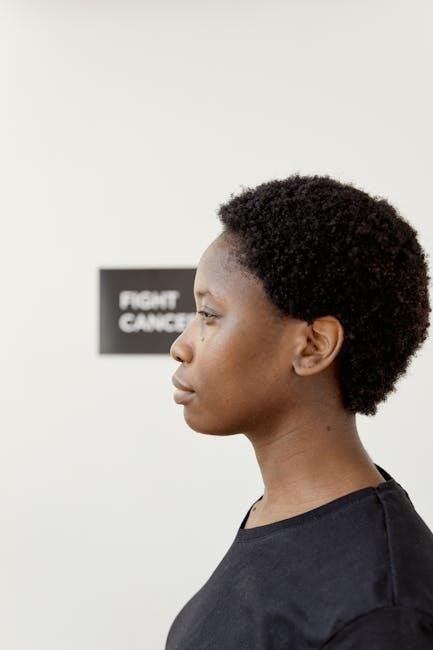Patient positioning is a critical aspect of medical practice, ensuring optimal access, safety, and outcomes․ Proper techniques and accessories enhance precision, minimizing risks and improving results․
Overview of Patient Positioning in Medical Practice
Patient positioning is a fundamental aspect of medical procedures, ensuring comfort, safety, and optimal access for diagnostic and therapeutic interventions․ It involves placing patients in specific poses to facilitate accurate imaging, surgical access, or therapeutic interventions․ Proper positioning enhances procedure efficiency, reduces complications, and improves outcomes․ Techniques vary widely, from supine and prone positions to lateral decubitus, each tailored to specific medical needs․ Standardized protocols guide positioning to minimize risks, such as pressure injuries or respiratory compromise․ Accessories like cushions, straps, and laser systems aid in achieving precise alignment․ This practice is critical across surgery, radiotherapy, and ICU care, with emerging technologies further refining its accuracy and safety․
Importance of Proper Patient Positioning
Proper patient positioning is vital for preventing complications and ensuring patient safety․ It minimizes risks of pressure ulcers, nerve damage, and respiratory issues while optimizing surgical or therapeutic outcomes․ Correct positioning enhances accessibility for procedures, reduces anesthesia risks, and improves recovery․ Improper positioning can lead to discomfort, injuries, or even long-term health issues․ Ensuring optimal alignment and support is critical for successful treatment and patient well-being․ This practice requires careful planning, specialized accessories, and ongoing monitoring to address individual needs and prevent adverse effects․
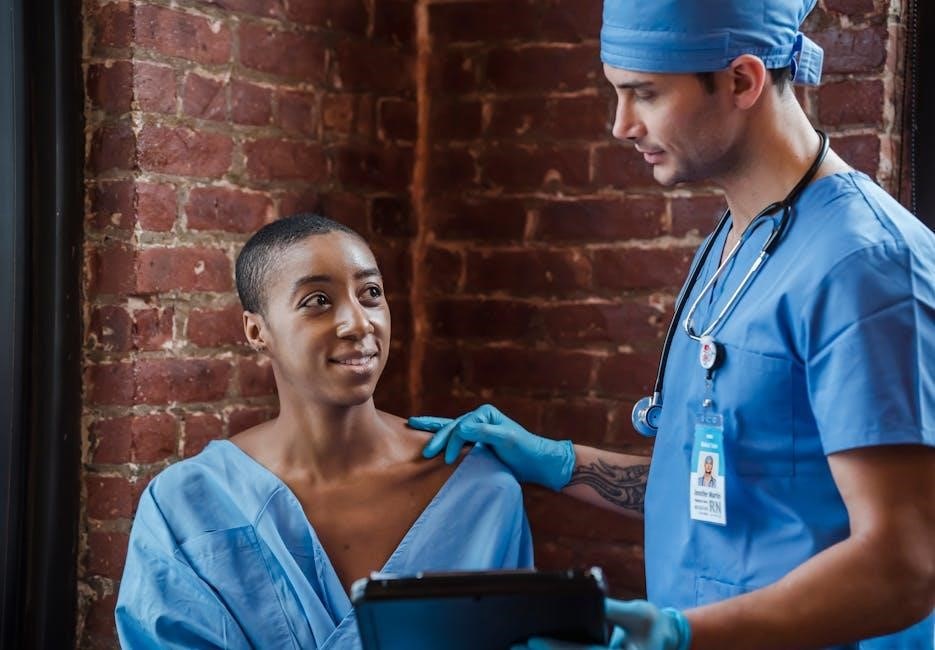
Types of Patient Positions
Patient positions include supine, prone, lateral, and Fowler’s, each serving specific medical purposes to enhance accessibility, comfort, and procedural outcomes while minimizing risks․
Supine Position: Definition and Uses
The supine position involves the patient lying on their back with legs slightly apart and arms at their sides․ It is commonly used in medical exams, surgeries, and procedures requiring abdominal or pelvic access․ This position provides easy access to the chest, abdomen, and pelvic regions, making it ideal for procedures like laparotomies, cesarean sections, and central line placements․ It also allows for better patient monitoring and stability during anesthesia․ The supine position is preferred for its simplicity and comfort, especially for patients with mobility issues․ Proper padding and support are essential to prevent discomfort and nerve damage during prolonged use․
Prone Position: Benefits and Applications
The prone position involves placing the patient on their stomach with arms extended or tucked under the body․ This position is highly beneficial for spinal surgeries, as it allows optimal access to the spine and reduces complications․ It is also used in certain radiological procedures and for patients with respiratory distress, as it improves lung recruitment and oxygenation․ The prone position minimizes abdominal pressure, reducing the risk of respiratory compromise․ Additionally, it is used in pediatric surgeries and for treating conditions like kyphosis․ Proper cushioning and support are essential to prevent nerve damage and ensure patient comfort during prolonged use․
Lateral Decubitus Position: Indications and Considerations
The lateral decubitus position involves placing the patient on their side, often with a supportive device between the knees and ankles․ This position is commonly used for thoracic and abdominal surgeries, as well as orthopedic procedures like hip and shoulder replacements․ It allows excellent surgical access while reducing pressure on internal organs․ Key considerations include cushioning pressure points, ensuring proper alignment, and monitoring circulation to prevent nerve damage․ Regular repositioning and padding of bony prominences are essential to enhance patient comfort and prevent complications․ This position is also beneficial for patients with respiratory issues, as it improves lung expansion and oxygenation․

Impact of Patient Positioning on Medical Outcomes
Proper patient positioning significantly influences recovery, reducing complications and enhancing surgical success․ Optimal alignment improves accessibility, minimizes tissue stress, and supports better physiological function, ensuring improved patient outcomes․
Effects on Respiratory Mechanics in Ventilated Patients
Patient positioning plays a critical role in optimizing respiratory mechanics for ventilated patients․ The prone position enhances lung recruitment and improves ventilation-perfusion matching, particularly in those with acute respiratory distress syndrome (ARDS)․ Supine positioning can lead to reduced lung volumes and increased airway pressures due to abdominal organ compression․ Proper alignment ensures diaphragmatic excursion and prevents atelectasis․ Regular repositioning, such as turning patients every 2 hours, reduces complications like respiratory fatigue and pulmonary aspiration․ Optimal positioning strategies, guided by clinical guidelines, are essential for improving oxygenation and reducing the need for high positive end-expiratory pressure (PEEP) levels in critically ill patients․
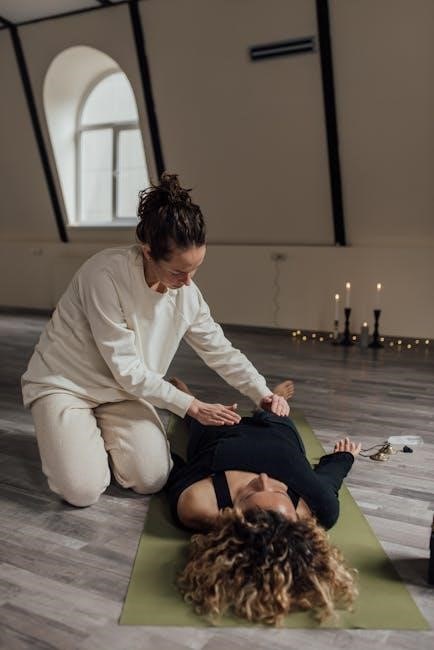
Role in Preventing Pressure Ulcers and Injuries
Patient positioning is a cornerstone in preventing pressure ulcers and injuries․ Regular repositioning redistributes pressure, reducing prolonged force on vulnerable areas․ The supine and prone positions are commonly alternated to avoid constant pressure on high-risk sites like the sacrum and heels․ Using supportive devices, such as cushions or mattresses, enhances pressure distribution․ Proper alignment prevents friction and shear forces, which can exacerbate tissue damage․ Monitoring skin integrity and adjusting positions every 2 hours significantly lowers the risk of pressure-related complications․ This proactive approach ensures patient comfort and safety, reducing the likelihood of long-term injuries․
Influence on Surgical Access and Outcomes
Patient positioning significantly impacts surgical access and outcomes by optimizing visibility and ergonomics․ Proper positioning enhances anatomical exposure, allowing surgeons to perform procedures with greater precision․ For example, the lithotomy position improves access to pelvic organs, while the prone position is ideal for spinal surgeries․ Correct alignment reduces complications and shortens procedure times․ Additionally, optimal positioning minimizes strain on surgical teams, improving ergonomics and reducing fatigue․ These factors collectively contribute to better patient recovery and reduced post-operative morbidity, emphasizing the critical role of positioning in achieving successful surgical outcomes․
Techniques and Accessories for Patient Positioning
Patient positioning techniques involve precise alignment using accessories like straps, cushions, and tables․ These tools ensure immobilization, support, and proper alignment, enhancing both safety and procedure accuracy․
Use of Laser Systems in Imaging Suites
Laser systems in imaging suites are critical for precise patient positioning, ensuring accurate alignment with imaging equipment․ These systems project beams to guide placement, minimizing errors and improving image quality․ Commonly used in MRI, CT, and radiation therapy, lasers help technicians achieve optimal positioning quickly․ They enhance reproducibility, reducing variability and improving diagnostic accuracy․ By ensuring consistent alignment, lasers contribute to better patient outcomes and safer procedures․ Their integration streamlines workflows, saving time and resources while maintaining high standards of patient care and imaging precision․
Role of Robotic Systems in Minimally Invasive Surgery
Robotic systems play a pivotal role in minimally invasive surgery by enhancing precision and control in patient positioning․ These systems, such as the da Vinci Surgical System, enable surgeons to achieve optimal positioning with minimal human error․ Robotics improve access to complex anatomical sites, reducing tissue trauma and enhancing surgical outcomes․ Advanced stabilization and tremor reduction features ensure precise instrument placement, minimizing complications․ Robotic-assisted positioning also allows for improved ergonomics for surgeons and better visualization of the surgical site․ This integration of robotics revolutionizes patient care, offering faster recovery times and reduced postoperative pain, making it a cornerstone of modern surgical practices․
Positioning Accessories in Radiotherapy
In radiotherapy, positioning accessories are essential for ensuring precise and reproducible patient alignment during treatment․ These include immobilization devices, such as body molds, thermoplastic masks, and vacuum cushions, which restrict movement and maintain consistency․ indexing systems, like rails and clamps, facilitate accurate setup and reproducibility․ Additionally, accessories such as carbon fiber tables and wedge compensators enhance dose delivery accuracy․ These tools are customized to individual patient needs, ensuring optimal radiation targeting while minimizing exposure to healthy tissues․ Proper use of positioning accessories is critical for achieving therapeutic goals and improving patient outcomes in radiation therapy․

Specialized Positioning in Specific Medical Fields
Specialized positioning is tailored to unique requirements in surgery, ICU care, and radiotherapy, ensuring optimal outcomes through customized techniques and immobilization devices for precise treatment delivery and patient safety․
Positioning in Spine Surgery: Key Considerations
Proper positioning in spine surgery is critical to ensure anatomical alignment, minimize complications, and optimize surgical access․ For cervical procedures, the prone or supine position with neck extension is often used, while lumbar and thoracic surgeries typically require the prone position on a radiolucent frame․ Maintaining the natural curvature of the spine is essential to avoid nerve damage or postoperative pain․ Preoperative imaging and patient-specific planning guide precise alignment․ Anesthesia and muscle relaxation must be coordinated to prevent muscle tension․ Support devices, such as Wilson frames or vacuum mattresses, are employed to stabilize the patient and maintain neutrality․ Proper positioning enhances surgical precision and safety․
Positioning Techniques in Revision Hip Arthroplasty
Positioning in revision hip arthroplasty requires meticulous planning to address complex anatomical challenges․ The lateral decubitus position is commonly employed, allowing optimal acetabular exposure․ Secure positioning with straps or pegs ensures stability, minimizing intraoperative movement․ Preoperative imaging and templating guide alignment and component placement․ Maintaining the natural femoral neck angle is crucial to restore biomechanical function․ Pressure-distributing pads are used to prevent pressure sores and nerve injury․ Proper positioning enhances surgical access, reducing complications and improving outcomes․ Anesthesia and muscle relaxation must be carefully coordinated to facilitate precise positioning․
Optimal Positioning for ICU Patients
Optimal positioning for ICU patients is critical for improving respiratory function, preventing complications, and ensuring comfort․ The semi-Fowler position (30-45°) is often used to enhance lung expansion and reduce respiratory effort․ Prone positioning is beneficial for patients with severe respiratory distress, as it improves oxygenation․ Regular repositioning helps prevent pressure ulcers and promotes skin integrity․ Additionally, elevating the head of the bed (30-40°) reduces the risk of aspiration and ventilator-associated pneumonia․ Monitoring the patient’s response to positioning and adjusting as needed is essential for optimizing outcomes and ensuring patient safety in the ICU setting․

Safety and Complications in Patient Positioning
Ensuring patient safety during positioning prevents nerve injuries, pressure ulcers, and respiratory compromise․ Proper training, equipment, and continuous monitoring are essential to minimize risks and complications․
Common Injuries Due to Improper Positioning
Improper patient positioning can lead to various injuries, including nerve damage, pressure ulcers, and respiratory complications․ Nerve injuries, such as brachial plexus damage, often result from prolonged stretching or compression․ Pressure ulcers develop due to inadequate cushioning or prolonged immobility․ Respiratory distress may occur from positions that restrict breathing․ Skin breakdown and joint dislocations are additional risks․ These complications can prolong recovery, increase healthcare costs, and lead to legal issues․ Proper training and adherence to positioning guidelines are crucial to minimize such risks and ensure patient safety during medical procedures or long-term care․
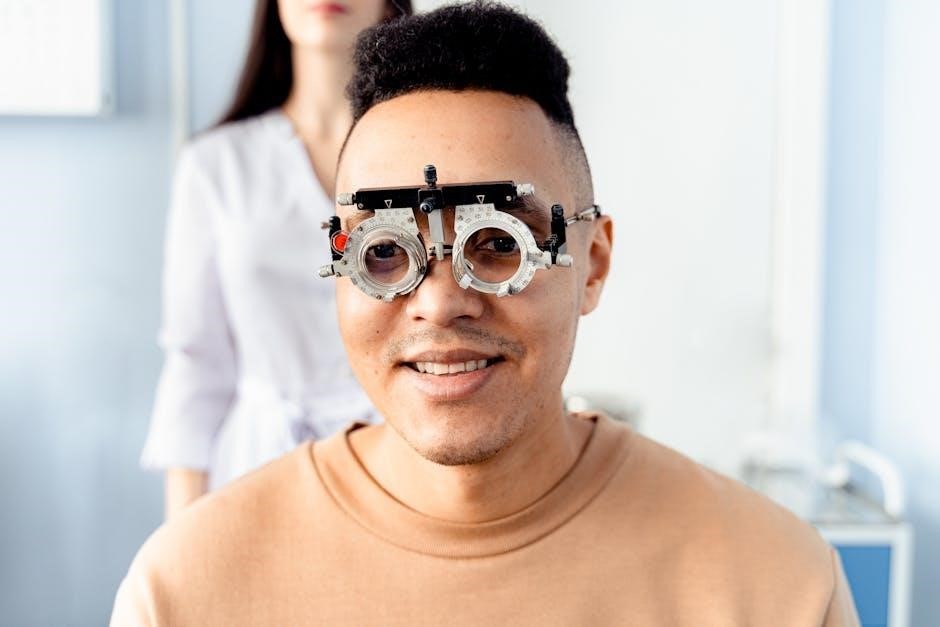
Physiological Changes Associated with Anesthesia and Positioning
Anesthesia and positioning can induce significant physiological changes, impacting respiratory, cardiovascular, and neurological systems․ Anesthesia depresses respiratory function, potentially causing hypoxia or hypercarbia․ Certain positions, like prone or Trendelenburg, can alter venous return and cardiac output․ Nerve compression or stretching may result in neuropathies․ Hypoperfusion of vital organs can occur due to prolonged immobilization․ These changes necessitate continuous monitoring to prevent complications․ Proper positioning and anesthesia management are critical to maintaining homeostasis and ensuring patient stability during medical procedures․
Preventive Measures for Patient Safety
Ensuring patient safety during positioning involves meticulous planning and adherence to best practices․ Proper training of healthcare staff is essential to handle patients correctly․ Use of supportive devices, like pillows and straps, helps maintain alignment and prevent strain․ Regular assessment of patients’ physical conditions and medical histories can identify risks․ Time-sensitive positioning adjustments minimize prolonged pressure points․ Clear communication among the healthcare team ensures consistency and safety․ Protocols for emergency situations, such as nerve compromise or respiratory distress, must be in place․ These preventive measures collectively enhance patient safety and reduce complications during medical procedures․
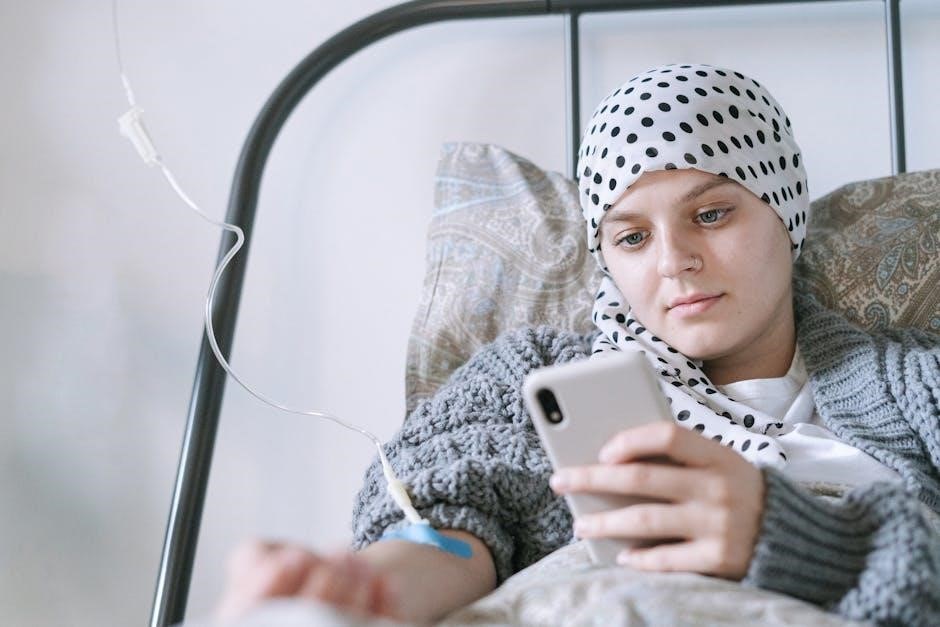
Future of Patient Positioning
The future of patient positioning lies in advanced technologies like AI and robotics, enabling precise, customizable solutions for enhanced safety and efficiency in medical procedures․
Emerging Technologies in Patient Positioning Systems
Emerging technologies in patient positioning systems include augmented reality (AR) for real-time anatomical visualization, artificial intelligence (AI) for predictive positioning optimization, and robotic-assisted systems for precise alignment․ These innovations enhance accuracy and reduce complications․ IoT-enabled devices now monitor patient positioning continuously, ensuring safety and compliance․ Smart materials, like dynamic support surfaces, adapt to patient needs, minimizing pressure points․ Advanced 3D printing creates customized immobilization devices, improving immobilization in radiotherapy․ These technologies collectively aim to personalize patient care, reduce errors, and improve surgical and therapeutic outcomes, making patient positioning more efficient and safer than ever before․
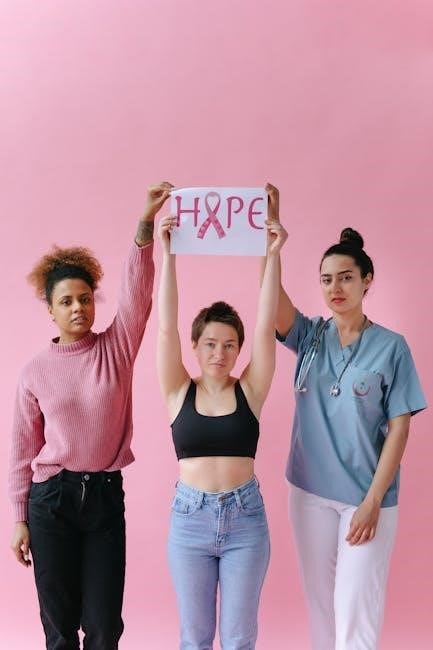
Innovative Approaches for Enhanced Precision
Innovative approaches for enhanced precision in patient positioning include personalized 3D modeling, real-time tracking systems, and AI-driven algorithms․ Advanced imaging fusion techniques integrate MRI, CT, and X-ray data for exact anatomical alignment․ Automated positioning robots minimize human error, while adaptive systems adjust in real time to physiological changes․ These methods reduce variability, improve surgical accuracy, and enhance patient safety․ Customizable immobilization devices and dynamic compensation technologies further optimize positioning for complex procedures․ Such innovations are transforming patient positioning into a highly precise and reproducible process, critical for modern medical interventions and improved clinical outcomes․
Resources and References
Access key studies, PDFs, and guidelines on patient positioning from medical journals, professional societies, and organizations like WHO and ASPS for comprehensive insights and best practices․
Key Studies and PDFs on Patient Positioning
Access essential studies and PDFs on patient positioning to enhance clinical practice․ Key research focuses on respiratory mechanics, pressure ulcer prevention, and surgical outcomes․ The WHO and ASPS provide comprehensive guidelines․ Orthopedic and neurosurgery positioning techniques are detailed in specialized PDFs․ These resources offer evidence-based recommendations for optimal patient care․ Downloadable materials include case studies, anatomical considerations, and safety protocols․ Medical professionals can benefit from practical checklists and imaging guides․ Ensure adherence to best practices by referencing these authoritative sources regularly for improved patient safety and procedural success․

Recommended Reading for Medical Professionals
Enhance your knowledge with authoritative resources on patient positioning․ The Journal of Medical Imaging and Radiation Oncology offers insights into radiation therapy positioning․ The WHO’s surgical safety checklist includes positioning guidelines․ The American Society of Plastic Surgeons (ASPS) provides detailed protocols for surgical procedures․ Textbooks like Surgical Patient Positioning: Nursing and Operating Room Perspectives are invaluable․ These resources cover radiation therapy, orthopedic procedures, and anesthesia safety․ Evidence-based techniques and practical checklists ensure optimal patient care․ Stay updated with the latest research and clinical practices to improve procedural outcomes and patient safety․
